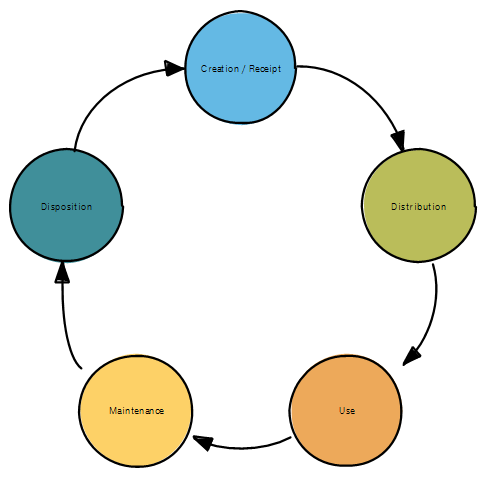Information Lifecycle Management (ILM) is a strategy to cope with the steady growth of data in a system. It relies on the life cycle of information of a record (basically a document) and policies dictated by business goals.
A life cycle of information is generally split into the following:

Figure 313: Information lifecycle
Creation / receipt
Information of any kind appears in the organization. This can be information from outside or information created inside the organization.
Distribution
Information needs a process of management. This means distributing the information inside and outside the organization.
Use
Once the information is distributed it serves any purpose e.g. it generates business decisions.
Maintenance
Information management involves making data retrievable for interested parties and archiving it for long-term preservation. Archiving may be required due to regulatory or legal requirements.
Disposition
Disposition means cleaning up information. This can be information that is rarely used or information that reaches the end of its retention period. Information has a short time of being used often (1 to 3 years) and changes its state from active to semi-active to finally inactive.
Retention periods are arranged by internal and external processes of the organization or they can be dictated by legal requirements. Information that is identified to have a continuing value to an organization is called long-term.
Under some circumstances the information life cycle is interrupted by events from outside or inside the organization. Those events can be e.g. legal holds where a mechanism must be foreseen to prevent the information from being disposed.
Technological interface
SAP ILM integration is based on XML based archiving [SAP XML DAS], which relies on HTTP requests and WebDAV methods as summarized in SAP ILM – HTTP requests.